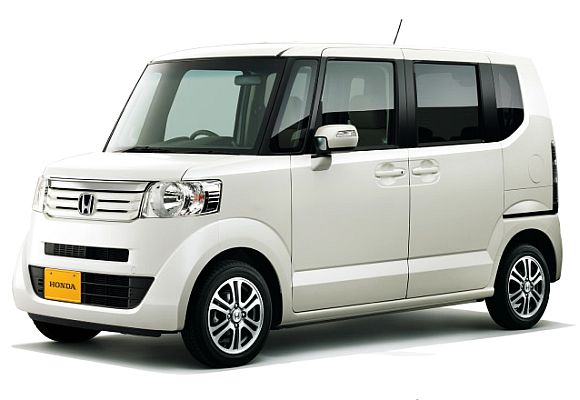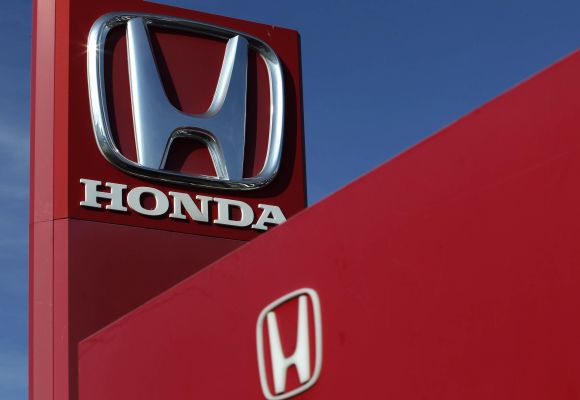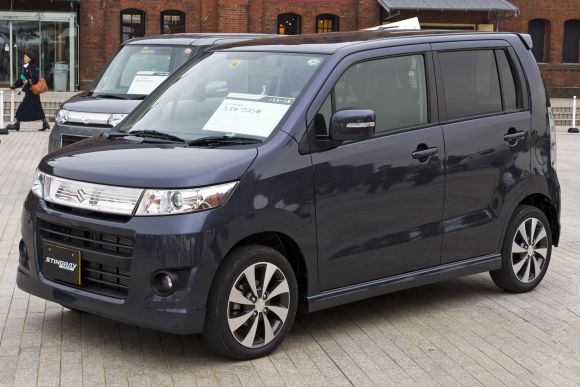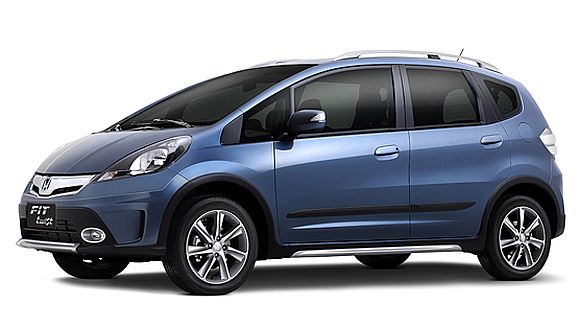 | « Back to article | Print this article |
Small is big for Japanese automakers eyeing India, Indonesia
Japanese automakers like Honda Motor Co and the Toyota-Daihatsu group have a problem: the smallest cars they make are very big in Japan - and only Japan.
Consider Honda's hi-tech N BOX, a four-passenger microcar that combines some of the utility features of a much larger SUV - the seats roll down to load a bicycle or two - and the fuel-sipping economy of a tiny, 660-cc engine.
For the first half of 2013, the zippy N BOX was the best-selling car in Japan's popular vehicle category that now represents almost 40 per cent of vehicles on the road.
But outside Japan, the concept of the so-called kei car, a term derived from the Japanese word light, is mostly unknown. Now that could change. The Japanese auto giants are considering exporting the technology to emerging market countries.
Click NEXT to read more…
Small is big for Japanese automakers eyeing India, Indonesia
"We have fairly low-priced cars in those markets already, but in India and markets like Indonesia, we need even smaller, even more affordable cars," Honda's chief spokesman Masaya Nagai said.
Rising fuel costs and a fast growing middle class in the world's second and fourth most populous states make them likely to be the first microcar customers.
As a first step, companies such as Honda have designed their kei cars - the kei is pronounced like the letter "k" - in a way that makes its easier to produce them overseas.
"We spent a long time nurturing the kei car technology in Japan, and we think it has the potential to be useful not only in developed markets but also in emerging markets," Honda's Chief Executive Officer Takanobu Ito told reporters in June.
Honda is not alone.
Click NEXT to read more…
Small is big for Japanese automakers eyeing India, Indonesia
Toyota Motor Corp is using technology from its affiliate Daihatsu Motor Co, a kei-car specialist, to develop minicars for Indonesia.
Mitsbubishi Motors Corp is looking at selling kei-concept cars in Africa, where President Osamu Masuko plans to attend a distributors' conference this month. Nissan's Chief Operating Officer Toshiyuki Shiga also said last month that kei cars have a potential of going global.
While few Japanese carmakers have tried to popularise microcars outside of Japan, there are exceptions.
Suzuki Motor Corp and Daihatsu have targeted India and Southeast Asia since the early 1980s, building a credible presence although their technology differs from that used to build Honda's kei.
Click NEXT to read more…
Small is big for Japanese automakers eyeing India, Indonesia
More recently, General Motors Co and its Chinese affiliate Wuling have been making an aggressive push for micro minivans in China. Their next bet is India.
Honda believes its advanced microcar technology and the favourable marketing conditions in India and Indonesia mean that the time is right to export the kei concept.
Joost Geginat, an autos market expert with Roland Berger consultancy in Singapore, predicts Japanese companies will invest a total $1.8 billion to produce kei-concept cars in Indonesia.
Micros in Macro Race
Now the race in the microcar market is heating up. Honda, Japan's No. 3 automaker most famous for its Civic and Accord cars, is betting on small cars to meet its aggressive target of selling 6 million vehicles globally a year by March 2017 from current sales of around 4 million.
Click NEXT to read more…
Small is big for Japanese automakers eyeing India, Indonesia
To do so, Honda aims to double sales in emerging markets to account for half of total vehicle sales, and its kei car technology could play a key role in that.
Indonesia, where over a million cars were sold last year, is one such market. Last month, Jakarta rolled back fuel subsidies, raising motor fuel prices by an average of 33 per cent. At around the same time, Indonesia signed into law a Low Cost Green Car (LCGC) programme to promote small cars such as the kei, though it is on hold pending review.
Geginat says Toyota, Daihatsu, Suzuki and Honda could roll out a combined 500,000 LCGCs, valued at under at $10,000 each, a year once the new law is in place.
Honda is looking at taking the microcar technology to Indonesia and neighbouring Malaysia, Hiroshi Takemura, who oversees Honda's small car operations, told Reuters last month.
Click NEXT to read more…
Small is big for Japanese automakers eyeing India, Indonesia
The company has designed its N BOX to share certain structures with the Fit, Honda's global compact car also known as the Jazz, meaning the two cars can be manufactured on the same line, said Yoshiyuki Matsumoto, Honda's managing officer.
Honda currently builds the Fit or Jazz at 10 plants around the world, including Indonesia and Thailand.
One challenge for Honda and other Japanese automakers is pricing. Honda's N BOX starts from around $12,500, slightly more expensive than the outgoing model of the Fit that starts from about $12,200.
To produce a sub $10,000 no-frills car in Indonesia, features like the turbocharger, vehicle assist system and airbags may have to go, and an old-fashioned key used to start the car instead of an electronic smart key.

© Copyright 2024 Reuters Limited. All rights reserved. Republication or redistribution of Reuters content, including by framing or similar means, is expressly prohibited without the prior written consent of Reuters. Reuters shall not be liable for any errors or delays in the content, or for any actions taken in reliance thereon.





